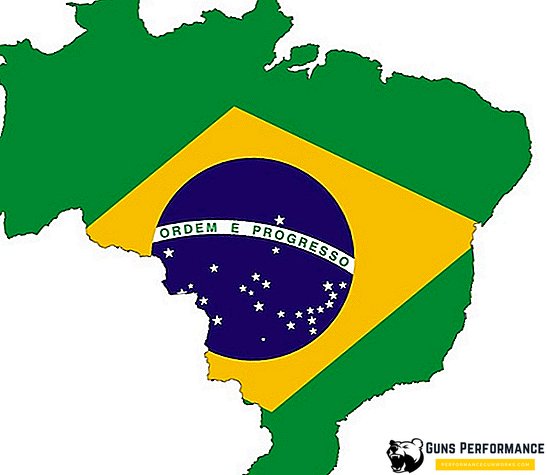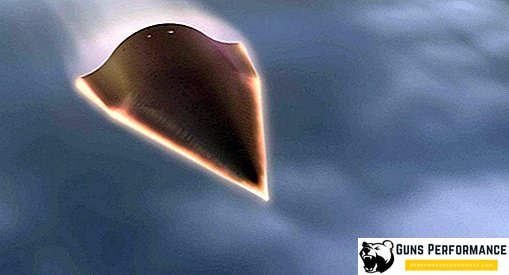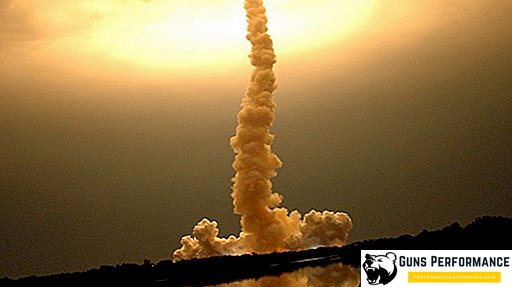Strong presidential power is one of the essential attributes of the political structure of Latin American countries. Virtually all countries that speak Romance languages, since independence from the metropolises, have a republican form of government, in which the presidential institution plays an important role in public policy. And although Brazil is spoken in Portuguese, the political system of government in the country is also built on the same model. The President of Brazil, whose powers are defined by the Constitution of the country, has a strong real power and is in close conjunction with parliament and government.

The current model of government in Brazil has existed for a little more than one hundred years, however, during this time 46 presidents have changed in the country, each of whom, in one way or another, has contributed to the political history of the state.
Brazil on the road to independence
In the tumultuous to the events of the XIX century, epochal changes affected not only the Old World. Over the ocean in the southern hemisphere there were no less dramatic things. Under the influence of large-scale geopolitical trends that swept the political map of the world, the borders of colonial empires cracked. Spain and Portugal could no longer hold in check their colonies, where their own elite appeared, took on their own form of a civil society and political formation. First, the Spanish system of colonial rule broke at the seams. A little later, Brazil severed the umbilical cord with Portugal, taking the path of independent economic and political development.

Today Brazil is the largest state in South America and a leading player on the political map of the world of Latin America. In the XIX century, the situation was completely different. In 1807, when almost all of Western Europe was controlled by Napoleon, the turn of Portugal came. The royal court, in view of the danger of the occupation of the country by French troops, was decided to move overseas to Rio de Janeiro. Thus, at some point Brazil became the main administrative and political center of the Portuguese kingdom. Since 1815, the former Portuguese colony has been granted royal decree status as the United Kingdom of Portugal, Brazil and Algarve, and in the country's largest city, Rio de Janeiro, are concentrated the main state institutions of the vast kingdom. This situation persisted until 1821, after which the King of Portugal, João VI, again transferred his court to Portugal. In Brazil, the royal power passes into the hands of the viceroy, who is the crown prince of King Juan VI Pedro.
An attempt by the metropolis to dissolve the kingdom of Brazil and again return to these lands the provincial colonial status, ran into opposition from the viceroy Pedro. Supported by local elite and rich planters, Viceroy Pedro on September 1, 1822, proclaimed the independence of Brazil, and a month later became the emperor of Brazil.

The first emperor of Brazil, Pedro I, became a symbolic person for the country. During his rule (1822-1831), the country began to acquire the features of an independent, sovereign and independent state. Instead of the former colony, a large state rich in natural resources appears with a cohesive and strong politically active civil society on the political map of the world. This is evidenced by the Brazilian Constitution, adopted in 1824, which for its time was a model of the Civil Law Act.
In 1826, the Emperor of Brazil Pedro I became the king of Portugal, concentrating in his hands all the power in both main parts of the Brazilian Empire. Pedro’s desire to hold onto two thrones at the same time played a cruel joke with the Emperor of Brazil. As a result of difficult political moves, Pedro lost the Portuguese crown in 1828, and three years later, in 1831, he was forced to abdicate the Brazilian throne in favor of his young son Pedro. From 1831 to 1840, Brazil was under the administration of the Regency Council, which was represented by notable local grandees and politicians. During this period, the Portuguese are being squeezed out of the state apparatus, and representatives of the local establishment take their place. In 1840, the Brazilian throne, with all the necessary powers, passed to the matured son of the first emperor of Brazil, Pedro, who received the crown together with the name Pedro II. With the advent of Pedro II to the imperial throne, the golden era of the Brazilian Empire, which stretched for fifty years, begins.

During the reign of the second emperor Pedro II, the country managed to keep its territory intact and unite all the administrative units of a huge state under strong rule. Brazil receives a well-developed state apparatus and a stable system of administrative and public administration. In 1888, the country finally gets rid of slave labor, putting this colonial civil institution outlawed. Against the backdrop of a turbulent social and political situation that engulfed most of the countries of South America, Brazil remained an island of political calm and stability. This situation favored the development of the country's economy, which was to a large extent promoted by the increased flow of immigrants from European countries.
Being in such a social and political situation, Brazil gradually approached its next political stage of development - the transition from the monarchy to the republican form of government.
The first republic and the first presidents of the country
The last Emperor of Brazil was in power from 1831 to 1890. During this time, Pedro II did a lot for the country, having managed not only to strengthen the authority of the monarch, but also to preserve his influence on all the main institutions of state power of the empire. During the reign of this monarch in Brazil, thirty governments were replaced, and the prime ministers became 23 persons representing the liberal and conservative parties - the two most influential political forces in the country.

Despite a fairly stable internal socio-political situation, Brazil has increasingly felt the influence of political processes pushing the country towards a change of political regime. In the country there has been a bias to the strengthening of power at the regional level. Local planters and landowners demanded from the central government to provide them with broad powers, the ability to influence the formation of the state system of governance of the country. The rapidly developing industry contributed to the emergence of a number of large industrial and financial monopolies, which also expressed support for the idea of transition to new principles of government. However, unlike its neighbors, where the change of political regimes was accompanied by a large-scale revolutionary movement, Brazil rather easily and bloodlessly stepped onto the next step, becoming a Republic.
In the situation that has arisen, Emperor Pedro II tried to find a way out of this situation, but his attempts were not crowned with success. Virtually all oligarchic groups and industrial-financial groups, in a company with representatives of the clergy, showed a desire to change the monarchical regime to a republican form of government.
The government crisis of 1888-89, which stirred up the army, added fuel to the fire. The military, led by General Fonseca, were inclined to think about the need for an armed coup in the country. After short demonstrations and armed clashes in the capital of the country on November 15, 1889, Emperor Pedro II was forced to abdicate the throne. After the former emperor left the country, Brazil was declared a republic.

Over the next two years, the country was governed by the Provisional Government, headed by Marshal Theodor da Fonseca. Trying to give legitimacy to his regime, he initiated the development of a new Constitution of the country. This period in Brazilian history is called the Saber Republic, during which all the threads of government were in the hands of the military.
In Brazil, the federal government is replacing the provincial control system. Former provinces are becoming states, and instead of a constitutional monarchy, a presidential vertical has emerged in the place of central government. The position is introduced since the adoption of the new Constitution of the country, in 1891. From this point on, the official status of the President of Brazil is heard in the following interpretation - the President of the Federative Republic of Brazil. In accordance with the new Basic Law, the President becomes not only the head of state and Supreme Commander of the republic’s armed forces, but also heads the executive power in the country. The new historical period in which the country set foot is commonly called the Old Republic, which lasted until 1930.
As in other similar situations, the person who led the coup d'état becomes the head of state. Marshal Theodorou da Fonseca, who was elected to the Congress on February 26, 1891, became the first president of the Brazilian Republic.

It should be noted that in Brazil, the new Constitution and government bodies were copied from the American model. The only difference that existed in the early stages of the functioning of the presidential institution was that only wealthy candidates could run for the presidency. Geographically, the circle of candidates for the presidency was limited to two states - Minas Gerais and São Paulo.
The reign of the first president of the Brazilian Republic was short-lived. Not having a specific state development program, Fonseca tried to win over all the powers of governing the country, effectively putting the Brazilian Congress on the fact of the emergence of a dictatorship. The attempt of the parliament to initiate the impeachment ended with the dissolution of the Congress, but the threat of a civil war was posed to the outlined opposition of the Parliament of the Republic to the President. Due to the difficult political situation, Theodore da Fonseca was forced to resign, transferring his powers to Vice President Florian Peixoto, the next President of the Republic (reigned 1891-1894).
Florian Peishot became the last head of state who represented the military party. In 1894, he was replaced by Prudente Jose de Morais Barrus - the representative of the Republican Party. With the coming to power of civilians, a relatively calm period of the Old Republic, which lasted until 1930, begins.

Presidents of Brazil in the 20th Century
In the 20th century, Brazil’s political history is rich in dramatic events. To have an idea of how the development of the political state system took place, it is enough to divide the twentieth century into the following stages:
- the period of the Old Republic - 1889-1930;
- Era Vargas -1930-1945;
- the period of the Second Brazilian Republic —1945-1964;
- the period of military dictatorship, the rule of the military junta - 1964-1985;
- the period of the New Brazilian Republic began in 1985 and continues to this day.
During the existence of the first Old Republic, the presidency of the country was held by 15 people. Apart from the first two presidents, Fonseca and Peixot, all subsequent heads of state were representatives of the Republican Party from the two main states of the country, Sao Paulo and Minas Gerais.
President Washington Louis Pereira de Soza held the post from 1926 to 1930, but was overthrown as a result of a military coup and could not finish until the end of his term. His successor was to be Julio Prestis de Albuquerque, but failed to take the presidency because of the difficult military and political situation in the country.
At this period, the Old Republic ends and comes the fifteen-year period of the rule of Getulio Vargas, who came to power as a result of a large-scale government crisis. Until 1934, Vargas served as interim president of the country. Only in 1934, after the adoption of the new Basic Law, Getulio Vargas legitimized his presidential powers, taking the path of creating a dictatorial pro-fascist regime. The era of Vargas lasted until 1945, when, along with the collapse of Nazi Germany, the other pro-German political regimes that existed at that time came to an end.

After the end of World War II, the political regime of the Second Republic was established in Brazil, which, despite its instability, managed to hold out for almost 20 years, until 1964. Another military coup overthrew the Vargas regime, and the military, led by General Euricus Gaspar Dutra, who held the highest state post until 1951, came to power. Despite the negative internal political reaction from civil society, Getulio Vargas again became president of Brazil in 1951. The political and social reforms undertaken by Vargas have failed. The country was on the verge of social and social explosion and economic collapse. In total, the Second Republic knew 9 presidents, each of whom tried to contribute to the development of the state. After the suicide of Getulio Vargas, the country enters the stabilization zone, which ended in 1964 with a military coup. Since 1955, the Basic Law has been amended, allowing the head of state to remain in office for two consecutive terms.
For the next nineteen years, until 1985, Brazil was ruled by a military junta, which nominated its leaders at various stages of the presidency. For 19 years, Brazil was governed by nine presidents, representing first a military party, and at the close of a curtain Alliance of National Revival.

Modern Brazil and New Presidents
The period of military rule put Brazil on the brink of foreign policy isolation. The military, having come to power in 1964, could not modernize the country's economy. The program of social and social equalization of civil society has failed. In the foreign arena, Brazil lost its status as the dominant power of South America, giving way to Argentina.
Being in this position, the ruling party Alliance of the National Revival took a course on a gradual transition to civilian rule. In the first democratically held elections, he won Tancred Nevis, but the sudden death did not allow him to take the presidency. Subsequent elections brought the winners to Jose Sarney, who became the first civilian head of state since 1964. In 1988, the country received a new Constitution, in accordance with which all subsequent presidents will be elected by direct popular vote.

Since then, the country has been headed by the following presidents:
- José Ribamar Ferreira de Araújo Costa Sarney - reign years 1985-1990;
- Fernando Afonso Color di Melo held the presidency from March 1990 to October 1992;
- Itamar Augusto Cautieru Franco - head of state from 1992 to 1995;
- Fernando Henrique Cardoso remained as president of Brazil from 1995 to 2003, two consecutive terms;
- Marco António de Oliveira Maciel President of Brazil from 2003 to 2011;
- Dilma Van Roussef - the first woman president of the country, who held the post from 2011 to August 31, 2018;
- Michelle Miguel Elias Temer Lulia was elected President of Brazil on August 31, 2018. Now the current head of state.

From this list, only two, Fernando Afonso Color di Melo and Dilma Van Rousseff could not get to the end of their powers. The first himself voluntarily resigned due to the threat of impeachment. The second, Dilma Rusef, was removed from office as a result of the impeachment procedure. Mainly for the presidency, a struggle unfolded between three political forces: the Brazilian Democratic Party, the Workers Party and the Brazilian Social Democrats.
Резиденция нынешних глав государства - дворец Планалту - комплекс зданий, построенный в новой столице страны городе Бразилиа.

Полномочия бразильских президентов
В соответствии с Конституцией страны на пост президента может баллотироваться любой гражданин страны возрастом не моложе 35 лет. Избрание осуществляется в результате прямого всенародного голосования из числа кандидатов политических сил, принимающих участие в выборах. Инаугурация избранного главы государства проходит в торжественной обстановке, в стенах Национального Конгресса. В тексте действующего Основного Закона закреплена поправка, разрешающая переизбираться действующему президенту страны на второй срок.
Что касается полномочий главы государства, то бразильские президенты имеют достаточно широкие права и не меньший круг обязанностей. Указы, декреты, решения, выдвигаемые главой государства в рамках исполнительной инициативы, носят силу законов. К полномочиям президента Бразилии относится подписание законодательных актов, контроль над соблюдением балансом всех ветвей государственной власти в стране.

В международной политике президент самостоятельно представляет страну в ходе дипломатических мероприятий, обладая правом подписывать международные соглашения и договоры, не противоречащие интересам государства. В компетенции президента находится верховное командование вооруженными силами страны. Глава государства имеет право объявлять в стране чрезвычайное и военное положение. Президент Бразилии наделен правом помилования и амнистирования в рамках действующего законодательства страны.












